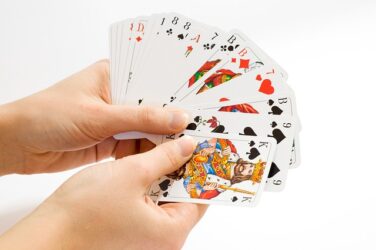Most of us grew up playing them and there was hardly a dull moment. Even as adults and as we get older, many of us continue to enjoy playing cards. The only thing that changes is that playing card games were simpler in childhood, whereas more complex games are preferred by adults. There is also the group that likes to try their luck at making money at casinos and other online rummy or poker platforms, or who simply enjoy playing classic card games like solitaire online for fun.

Even though many people are quite good at playing cards, there’s usually limited knowledge about the game itself and the cards. To fix your curiosity, here is a look at some of the most amazing facts about playing cards you probably did not know till now.
Who invented the playing cards?
The origin of playing cards is traced back to China. Many experts believe that people in China used to play a similar game in the 9th century. However, it was not exactly like the 52-card deck that we have now. Variations of playing cards have been found in various locations around the globe. It is assumed that most of these were based on the version played in China. In case of the 52-card deck in use today, it can be traced back to Europe in the late 15th century.
Why the joker in playing cards?
There are different reasons why the joker is added to the playing cards. One obvious reason is to have a replacement in case any of the 52 cards is damaged or lost. Joker is also there as it is used as a wild card in many playing card games. Experts believe that joker was added to the card deck in the 1850s in Europe. Since then, joker cards have become standard with every deck.
Why 52 cards in a deck?
There have been various variations of playing cards such as 24 cards, 40, 48, etc. However, it appears that 52-card deck became the more acceptable format over the years. One reason could be that a 52-card deck can support a wider range of games to be played. It also increases the number of permutations and combinations, thereby increasing the complexity and unpredictability of the game.
Why red and black cards and 4 suits?
It is assumed that red cards represent the day, whereas the black cards represent the night. And the four suits represent the four seasons. Similarly, the 13 cards in a suit could be representative of the lunar cycles. And 12 court cards will be the 12 months of the year. Even more intriguing is that if you add all the symbols in a deck, you get 364 days, almost a year.
World’s oldest playing cards deck
A card deck displayed at the Metropolitan Museum of Art in New York is supposed to be the oldest deck available in public domain. It is a hand-painted deck and considered to have been created in mid-15th century in Netherlands.
An effective tool for spies
James Bond has been seen playing cards in various movies. And it may not be without a reason. That is because playing cards have been effectively used by spies for various purposes. For example, prisoners of wars during World War II were secretly given cards that had embedded maps of the escape route. Similarly, cards have also been used to pass confidential information in coded form.
Which is largest playing cards manufacturer?
The biggest manufacturer of playing cards in the world is the United States Playing Card Company (USPCC). Some of the company’s top brands include Bee, Aviator and Tally-Ho. Another large company manufacturing playing cards is Belgian-based Cartamundi.
Ace of Spades for good luck
During World War II, Ace of Spades was painted onto the helmets of soldiers. This was supposed to bring them good luck. However, it could also be a means to differentiate between a friend and foe.
8 Farro-out shuffles
Playing cards have a lot of mathematics built into them. One trick you can try yourself is to do 8 Farro-out shuffles. If done correctly, the cards will return to their original order after the 8th Farro-out shuffle.
Playing cards can boost memory, problem solving
Some playing card games can improve cognitive functions. For example, playing the game of Bridge has shown to boost memory and problem-solving abilities.
 Newspatrolling.com News cum Content Syndication Portal Online
Newspatrolling.com News cum Content Syndication Portal Online







